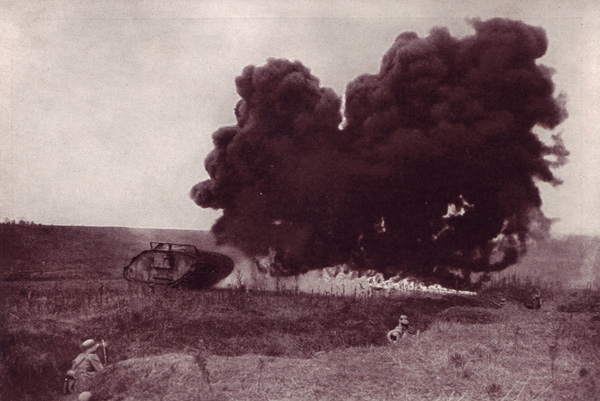“But what is this? Has hell opened up under our feet? Are we right at the rim of a furious volcano? The trench is filled with flames, with sparks, with bitter smoke, the air is unbreathable. I hear hissing, crackling, and alas, yes, the cries of pain.” ((source 1: Louis Barthas: Poilu)
With these words the French corporal Louis Barthas described a German flamethrower attack at the western front in the summer of 1915. First used in battle in the Forest of Argonne in 1914, the flamethrowers were supposed to end the still stand in the trench warfare. They have been specifically implemented for the tactical support of the assault troops and for the local defense. Apart from the physical destruction the flames had a paramount psychological impact on the enemy. As soon as it was known that an attack with flamethrowers was planned the enemies troops often retreated, this created more advantageous conditions for the attacking infantry. Bernhard Reddemann, who played a decisive part in the development of the military flamethrower, emphasized that the major impact was “the moral shock of the enemy [which] was so immense that he never tried to resist physically”. Furthermore the flamethrower had a huge moral impact on the own infantry as well by supporting their “will to attack” and their “confidence in the victory”. Reddemann, a former fire chief of Posen and leader of a pioneer company of the territorial forces, started to research on devices to spray burning fluids in 1907 and designed since 1912/13 prototypes for two different seizes of flamethrowers. Because of his participation in the development of this cruel melee weapon and the connected military utilization of fire brigades he is one of the most controversial persons in the history of German fire brigades. Richard Fiedler (source 2), an engineer from Berlin, ranks as the re-discoverer of the first modern flamethrower he had started as early as 1900 with the research for his “fire-tube” and devices to fumigate trenches. Since 1914 Reddemann worked together with him on the further development. The technology was comparable simple and the flames could be generated with little effort. Nitrogen was pressed into a container with a highly inflammable oil mixture under high pressure. A valve controlled the emanation of the oil stream which was inflamed by an ignition. The thick black smoke that was produced enhanced the moral impact on the enemy. When the threat was imminent to be discovered to early by the enemies artillery another oil mixture was applied which produced only a thin, hardly visible smoke.
Use of a flamethrower against a tank. „Frontkämpferwerk“, p. 192 (source 3)
Sophie Richter, Dresden 2015
Bibliography- Fred Koch: Flammenwerfer des deutschen Heeres bis 1945, Wölfersheim-Berstadt 1995.
- Thomas Wictor: German flamethrower pioneers of World War I, Atglen 2007.